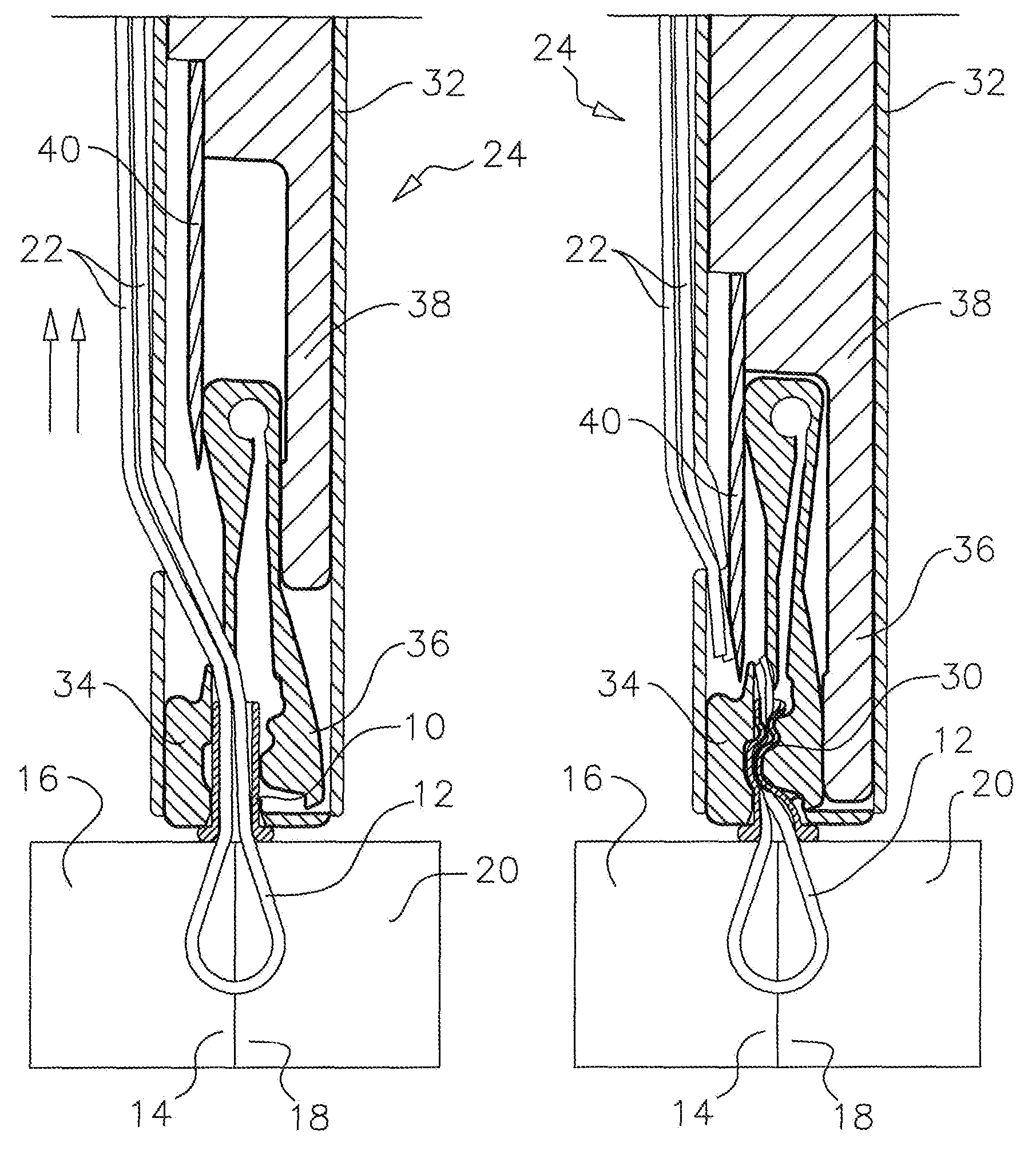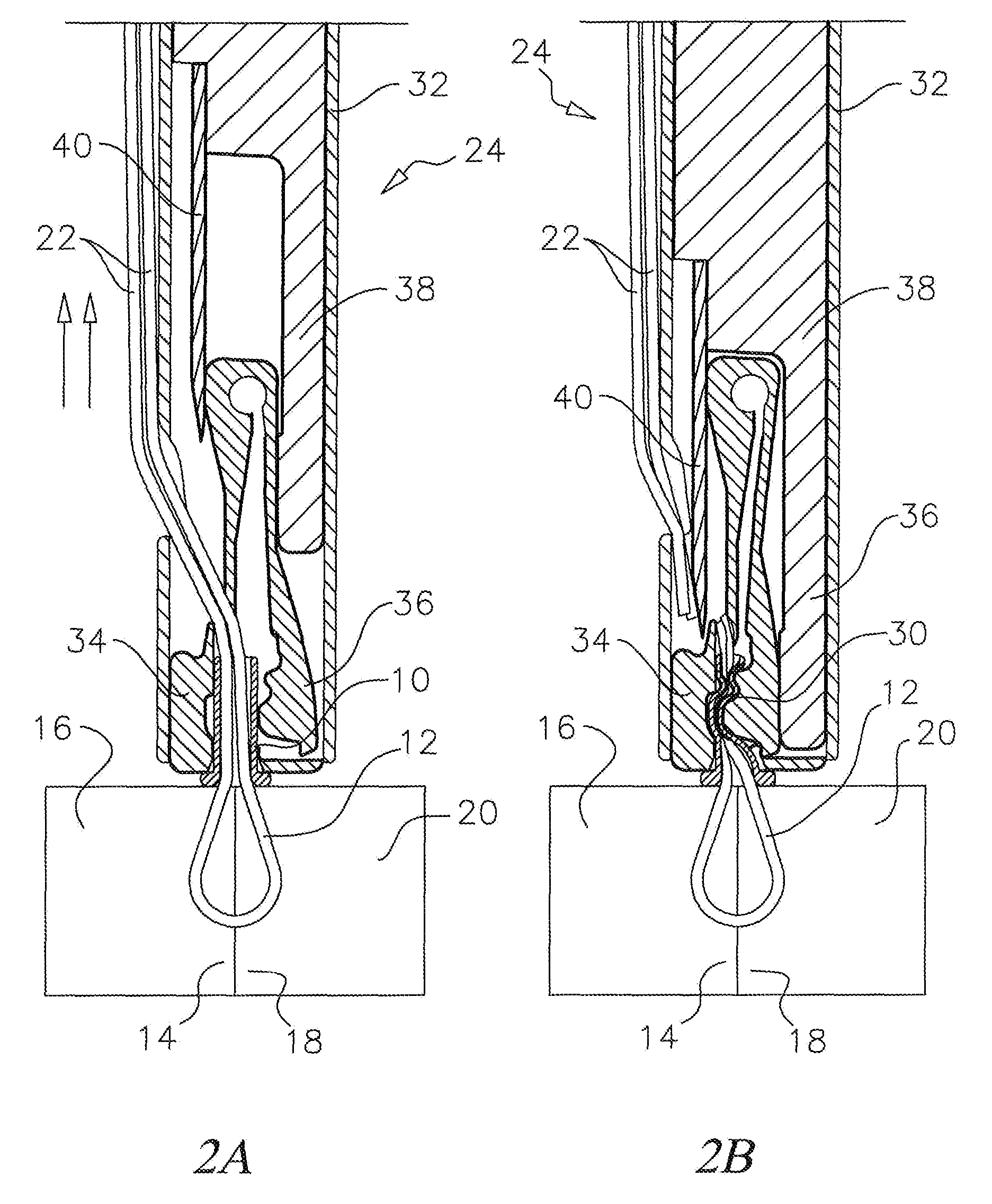Bioabsorbable magnesium knots for securing surgical suture
a bioabsorbable, magnesium-based technology, applied in the field of crimpable metal sleeves, can solve the problems of insufficient strength or durability of bioabsorbable polymeric materials to be reliable, low profile, easy to deploy, etc., and achieve the effect of low profile and easy deploymen
- Summary
- Abstract
- Description
- Claims
- Application Information
AI Technical Summary
Benefits of technology
Problems solved by technology
Method used
Image
Examples
Embodiment Construction
[0039]Referring to FIG. 1A, the Magnesium Knot 10 in accordance with an aspect of the present invention is shown in perspective view held within the distal tip of it delivery device 24, which also provides a suture exit hole 26. The relationship between a suture loop 12 and the Magnesium Knot 10 is illustrated to show the suture loop coursing and looping through both an apposing edge 14 of the left side of tissue wound segment 16 and a corresponding apposing edge 18 of the right side of tissue wound segment 20. Note that by advancing the Magnesium Knot 10 toward tissue segments 16 and 20 and by pulling the suture tails 22, the wound edges 14 and 18 can be drawn together into intimate apposition to optimize healing. Also note that a tubular cannula 28 is shown to illustrate a device through which the Magnesium Knot delivery device 24 and suture tails 22 can pass into the patient.
[0040]FIG. 1B shows a close-up of the Magnesium Knot 10 and suture 12, 22 of FIG. 1A now with the tip of i...
PUM
| Property | Measurement | Unit |
|---|---|---|
| thickness | aaaaa | aaaaa |
| thickness | aaaaa | aaaaa |
| wall thickness | aaaaa | aaaaa |
Abstract
Description
Claims
Application Information
 Login to View More
Login to View More - R&D
- Intellectual Property
- Life Sciences
- Materials
- Tech Scout
- Unparalleled Data Quality
- Higher Quality Content
- 60% Fewer Hallucinations
Browse by: Latest US Patents, China's latest patents, Technical Efficacy Thesaurus, Application Domain, Technology Topic, Popular Technical Reports.
© 2025 PatSnap. All rights reserved.Legal|Privacy policy|Modern Slavery Act Transparency Statement|Sitemap|About US| Contact US: help@patsnap.com



